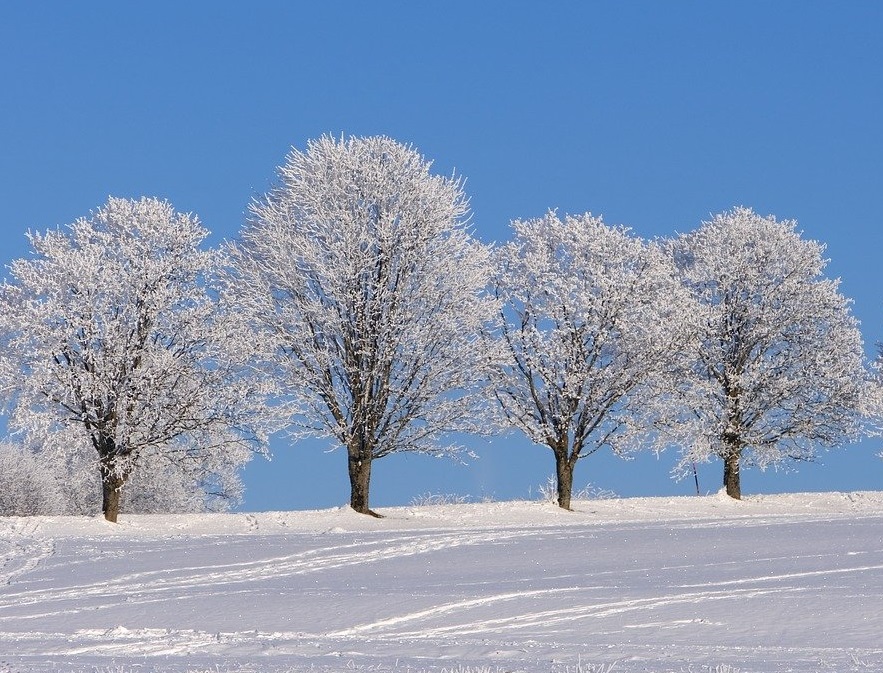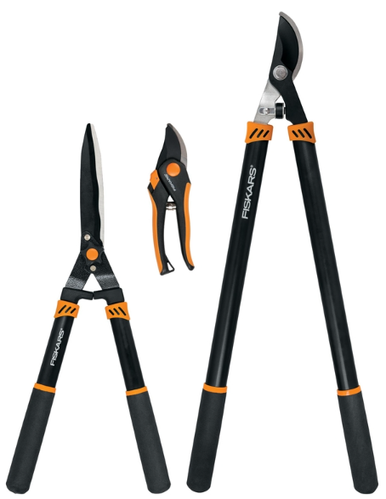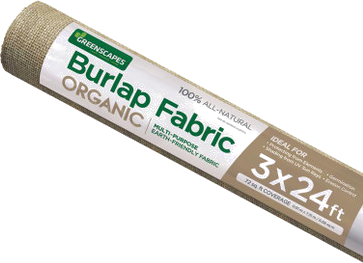Winter Tree Pruning
 Prune Trees in Winter
Prune Trees in Winter
Winter is when most plants and trees are dormant, which makes it the ideal time for pruning trees and shrubs.
Deciduous trees, especially, are easiest to evaluate and prune when their leaves have fallen and all their branches are visible. Plus, pruning in winter has a number of other benefits that make it better for trees.
- Sap isn’t running through trees, so they won’t bleed where they’ve been pruned
- Warm-season insects and pathogens aren’t around, so they can’t attack new pruning wounds
- Trees that need stabilizing or cabling are easier to work on when there aren’t any leaves
- Any hazardous trees can be evaluated or removed before the next winter storm
- It’s less stressful for trees.
 Essex Co-op has an extensive selection
of pruners, shears, loppers and pole saw/pruners. Please visit our garden center to check out these high quality pruning
tools.
Essex Co-op has an extensive selection
of pruners, shears, loppers and pole saw/pruners. Please visit our garden center to check out these high quality pruning
tools.
Prune Shrubs in Late Winter
The best time to prune most evergreen shrubs is late winter before new growth starts. Pruning at this time allows cuts to heal and new buds to form. Remove any dead or broken branches and prune to maintain the shrub’s natural shape. Selective pruning, one branch at a time, is generally better than shearing. Sheared evergreens can be more difficult to maintain.
Pruning Young Trees vs Mature Trees
Young trees are usually in good shape and pruning can simply involve a light clean up by removing small decayed or broken branches to benefit the tree as it grows.
Mature trees (2 to 3 years and older) may require more involved pruning, bracing or cabling. For these procedures, you may want to look into hiring a Tree Care Expert. There are many companies in our area offering these services. When choosing a company look for ones that are: focused on tree service work, employ a ‘certified arborist’ and are properly insured.
Inspect Trees for Potential Hazards
With all the leaves gone, winter is a good time to inspect your deciduous trees and make sure they’re healthy and in good shape. Look for broken, diseased, or overloaded branches that might fall on people or property. These should be removed before they have the chance to fail under heavy snow or ice loads or break off during high winds.
Wrap Tender Trees & Shrubs
 Tree and shrub wraps, or blankets, are
another winter layer that can help your landscape. Tree wrap can help to
prevent bark from cracking in response to fluctuations in winter temperature of
freezing and thawing. Fruit trees with naturally thin bark, and any other young
or tender trees and shrubs you may have, will benefit from being wrapped in burlap or frost
protection cloth.
Tree and shrub wraps, or blankets, are
another winter layer that can help your landscape. Tree wrap can help to
prevent bark from cracking in response to fluctuations in winter temperature of
freezing and thawing. Fruit trees with naturally thin bark, and any other young
or tender trees and shrubs you may have, will benefit from being wrapped in burlap or frost
protection cloth.
Water Trees & Shrubs in Winter
During warmer winter days, be sure to thoroughly water your trees and shrubs. Trees may be dormant in winter, but their roots are still taking up water and evergreens are still releasing water into the air.
Give your trees and shrubs a long, slow soak of water around the root ball when temperatures are above freezing. This will help prevent leaves and needles from drying out and turning brown at their tips and around their edges. This is especially important for newly planted trees (planted within the last two years.)
